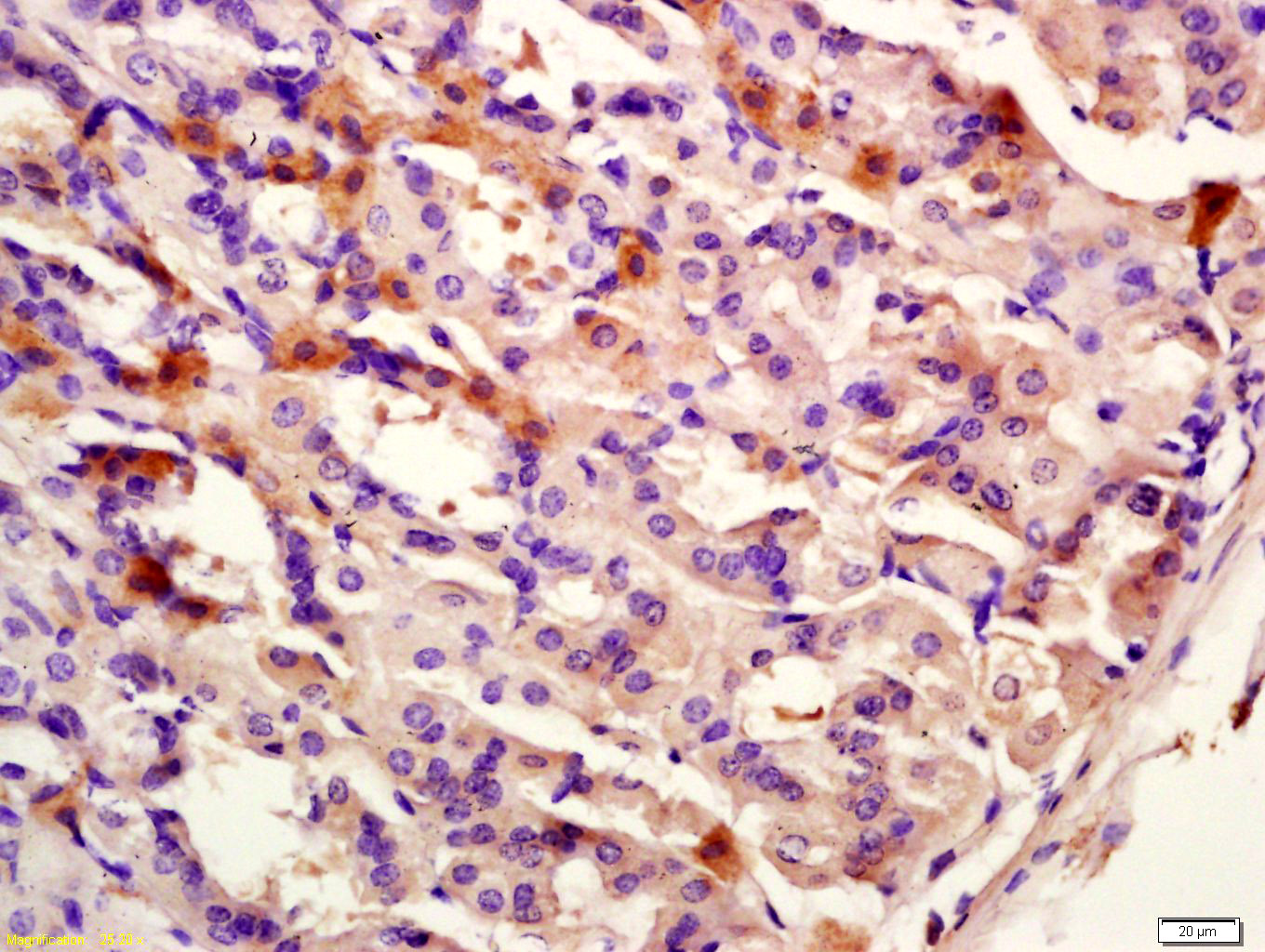
Rabbit Anti-CK12 antibody
65 kDa cytokeratin; CK 12; CK 3; CK12; CK3; Cytokeratin 12; Cytokeratin 3; K12; K3; keratin 12 (Meesmann corneal dystrophy); Keratin 12; Keratin 3; Keratin, type I cytoskeletal 12; K1C12_HUMAN; Keratin, type II cytoskeletal 3; KRT12; KRT3.
View History [Clear]
Details
Product Name CK12 Chinese Name 细胞角蛋白12抗体 Alias 65 kDa cytokeratin; CK 12; CK 3; CK12; CK3; Cytokeratin 12; Cytokeratin 3; K12; K3; keratin 12 (Meesmann corneal dystrophy); Keratin 12; Keratin 3; Keratin, type I cytoskeletal 12; K1C12_HUMAN; Keratin, type II cytoskeletal 3; KRT12; KRT3. literatures Research Area Cell biology Signal transduction Cell type markers Cytoskeleton Immunogen Species Rabbit Clonality Polyclonal React Species Mouse, (predicted: Human, Rat, Dog, Rabbit, ) Applications ELISA=1:5000-10000 IHC-P=1:100-500 IHC-F=1:100-500 IF=1:100-500 (Paraffin sections need antigen repair)
not yet tested in other applications.
optimal dilutions/concentrations should be determined by the end user.Theoretical molecular weight 54kDa Cellular localization cytoplasmic Extracellular matrix Secretory protein Form Liquid Concentration 1mg/ml immunogen KLH conjugated synthetic peptide derived from human CK12/Cytokeratin 12: 151-250/494 Lsotype IgG Purification affinity purified by Protein A Buffer Solution 0.01M TBS(pH7.4) with 1% BSA, 0.03% Proclin300 and 50% Glycerol. Storage Shipped at 4℃. Store at -20 °C for one year. Avoid repeated freeze/thaw cycles. Attention This product as supplied is intended for research use only, not for use in human, therapeutic or diagnostic applications. PubMed PubMed Product Detail Cytokeratin 12 is a member of the intermediate filament family of proteins and is a heterotetramer of two type I and two type II keratins. Keratin 3 is specifically expressed in the corneal epithelium with family member KRT12. Cytokeratin 12 encodes the type I intermediate filament chain keratin 12, expressed in corneal epithelia. Defects in KRT3 and KRT12 are a cause of Meesmann corneal dystrophy (MCD), an autosomal dominant disease that causes fragility of the anterior corneal epithelium. Symptoms occur in adulthood and include rupture of the corneal microcysts that may lead to photophobia, contact lens intolerance and intermittent diminution of visual acuity. Defects in KRT12 are a cause of juvenile epithelial corneal dystrophy of Meesmann (MCD)
Function:
May play a unique role in maintaining the normal corneal epithelial function. Together with KRT3, essential for the maintenance of corneal epithelium integrity (By similarity).
Subunit:
Heterotetramer of two type I and two type II keratins. Keratin-3 associates with keratin-12.
Tissue Specificity:
Cornea specific.
DISEASE:
Corneal dystrophy, Meesmann (MECD) [MIM:122100]: An autosomal dominant corneal disease characterized by fragility of the anterior corneal epithelium. Patients are usually asymptomatic until adulthood when rupture of the corneal microcysts may cause erosions, producing clinical symptoms such as photophobia, contact lens intolerance and intermittent diminution of visual acuity. Rarely, subepithelial scarring causes irregular corneal astigmatism and permanent visual impairment. Histological examination shows a disorganized and thickened epithelium with widespread cytoplasmic vacuolation and numerous small, round, debris-laden intraepithelial cysts. Note=The disease is caused by mutations affecting the gene represented in this entry.
Similarity:
Belongs to the intermediate filament family.
SWISS:
Q99456
Gene ID:
3859
Database links:Entrez Gene: 3859 Human
Entrez Gene: 268482 Mouse
Omim: 601687 Human
SwissProt: Q99456 Human
SwissProt: Q64291 Mouse
Unigene: 66739 Human
Unigene: 436651 Mouse
Unigene: 94852 Rat
Product Picture
Antigen retrieval: citrate buffer ( 0.01M, pH 6.0 ), Boiling bathing for 15min; Block endogenous peroxidase by 3% Hydrogen peroxide for 30min; Blocking buffer (normal goat serum,C-0005) at 37℃ for 20 min;
Incubation: Anti-CK12 Polyclonal Antibody, Unconjugated(SL4625R) 1:200, overnight at 4°C, followed by conjugation to the secondary antibody(SP-0023) and DAB(C-0010) staining
References (0)
No References
Bought notes(bought amounts latest0)
No one bought this product
User Comment(Total0User Comment Num)
- No comment



 +86 571 56623320
+86 571 56623320
 +86 18668110335
+86 18668110335

